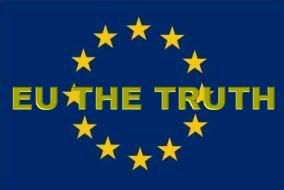.
In AD 43 the Roman Empire mounted a full scale invasion of Britain. It is estimated that they took a force of four full legions plus a similar number of auxiliaries across the English Channel, or around 45,000 men. A very large army in those days. They were met with fierce resistance and were forced to fight two major battles against the main tribes of Southern England. After the second battle near the Thames they were so depleted that they had to call for reinforcements from Rome. For decades after the invasion they were still fighting against English, Welsh, and Scottish tribes that refused to accept the Roman occupation of Britain. They also faced major rebellions including that mounted by Queen Boadicea of the Iceni tribe in AD 60, in which three cities, including London were destroyed, and a Roman legion routed. This revolt almost persuaded Roman emperor Nero to completely withdraw Roman forces from Britain.
After the Romans did withdraw from Britain in AD 410 people from the powerful Germanic tribes of the Angles, Saxons, and Jutes began to arrive in Britain in large numbers. Initially they were brought in as mercenaries employed by local British towns to defend them against raids from Scottish and Irish tribes. Their numbers increased and their communities became stronger until eventually they rebelled against the British rulers. There followed a series of battles including the battle of Wippeddesfleot in 466, in which the Saxons defeated the British forces with great slaughter on both sides, the battle of Mecredesburne in 486, and the battle of Mons Badonicus at the end of the 5th century in which the Britons defeated the Saxons. However by bringing in more forces from Germany the Anglo-Saxon newcomers eventually overwhelmed the native Britons and came to dominate lowland England by the year 600. It is significant that during the Anglo-Saxon take-over many native Britons fled the country to a part of France to which they gave the name Brittany.
By the year 850 England was divided into the three Anglo-Saxon Kingdoms of Wessex in the South, Mercia in the Midlands, and Northumbria in the North. The first recorded raid on Britain by the Scandinavian Vikings occurred in 787. Over the next century the Vikings first raided and plundered coastal areas of Britain, and then settled and colonised large parts of the country. Due to the political and social turmoil in Mercia and Northumbria the native British were not organised enough to resist the Danish invaders.
After the Romans did withdraw from Britain in AD 410 people from the powerful Germanic tribes of the Angles, Saxons, and Jutes began to arrive in Britain in large numbers. Initially they were brought in as mercenaries employed by local British towns to defend them against raids from Scottish and Irish tribes. Their numbers increased and their communities became stronger until eventually they rebelled against the British rulers. There followed a series of battles including the battle of Wippeddesfleot in 466, in which the Saxons defeated the British forces with great slaughter on both sides, the battle of Mecredesburne in 486, and the battle of Mons Badonicus at the end of the 5th century in which the Britons defeated the Saxons. However by bringing in more forces from Germany the Anglo-Saxon newcomers eventually overwhelmed the native Britons and came to dominate lowland England by the year 600. It is significant that during the Anglo-Saxon take-over many native Britons fled the country to a part of France to which they gave the name Brittany.
By the year 850 England was divided into the three Anglo-Saxon Kingdoms of Wessex in the South, Mercia in the Midlands, and Northumbria in the North. The first recorded raid on Britain by the Scandinavian Vikings occurred in 787. Over the next century the Vikings first raided and plundered coastal areas of Britain, and then settled and colonised large parts of the country. Due to the political and social turmoil in Mercia and Northumbria the native British were not organised enough to resist the Danish invaders.

However King Alfred of Wessex (c849-899), later known as Alfred the Great, did manage to halt the Danish advance. He first attempted to keep the invading forces out of the adjoining Kingdom of Mercia in the year 868, but failed. Two years later in 870 Alfred and his army were forced to fight nine separate battles against the Danes to prevent them invading Wessex. Fighting continued for several years until the Battle of Edington in 878 which was a decisive victory for Alfred. By 879 Wessex and a large part of Mercia had been completely cleared of the invaders. However there were many further campaigns and battles to fight against the foreign invaders until by 927 British forces had retaken all the areas that had previously been held by the Danes. By 955 the grandson of Alfred the Great, Eadred ruled over a united England. Government became centralised and the King had the infrastructure to run the whole country.

In the year 1066 the then King of England, Harold I was forced to fight two major battles to defend his country against invasion. The first was at Stamford Bridge against a Norwegian army led by Harald Hardrada which had landed in England that year. He won this battle and destroyed the Norwegian army, but immediately afterwards was forced to march South to fight another invading army from France, led by William Duke of Normandy. Every Englishman knows what happened next. King Harold was defeated at the Battle of Hastings in 1066 and the Norman conquest of Britain began. However the natives of Britain did not surrender easily. As William’s army advanced on London they met with much armed resistance, and when they finally reached London heavy fighting resulted in many deaths. The following years saw uprisings in Herefordshire, Devon, and Northumberland, and also insurrections in Dover, York, and Chester. English resistance continued for 20 years after the invasion with the Normans being continually harassed by English guerrilla forces.
Why should members of the BNP be vilified for doing what people have always done throughout history and are still doing to this day around the world - trying to prevent their country being invaded by foreigners. It is the people in this country who welcome foreign invasion who are not behaving normally. And a million immigrants a year is definitely an invasion.
Paul Harris
Information taken from the sites below-
http://www.postroman.info/saxon2.htm
http://www.britannia.com/history/hastings.html
http://en.wikipedia.org/wiki/Anglo-Saxons
http://en.wikipedia.org/wiki/Roman_Britain
http://members.aol.com/bakken1/angsax/asinv.htm
http://en.wikipedia.org/wiki/Battle_of_Mons_Badonicus
http://en.wikipedia.org/wiki/Alfred_the_Great
http://en.wikipedia.org/wiki/Vikings
http://en.wikipedia.org/wiki/Athelstan_of_England
http://www.great-britain.co.uk/history/ang-sax.htm



















1 comments:
I am a Medieval historian and I I am confused/amused at the point the BNP is trying to make here. If we were to throw out all the 'invaders' then Britain would be left for the North Welsh and the Cornish. Cultural and 'racial' integration has been the founding principle that has made this country great. For example, the industrial revolution that made Britain the 'workshop of the world' as down to the skills introduced by French Protestants escaping persecution. With the influence and 'invasion' of foreigners Britain would still be a back-water.
Post a Comment